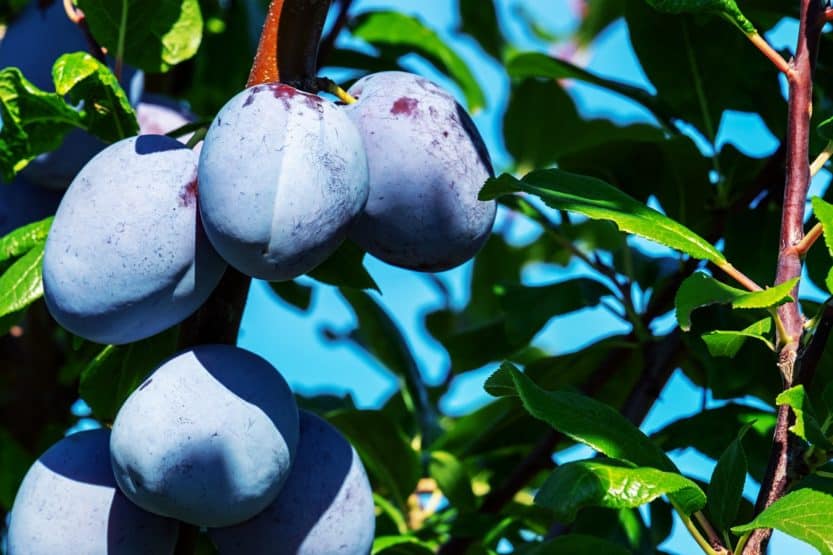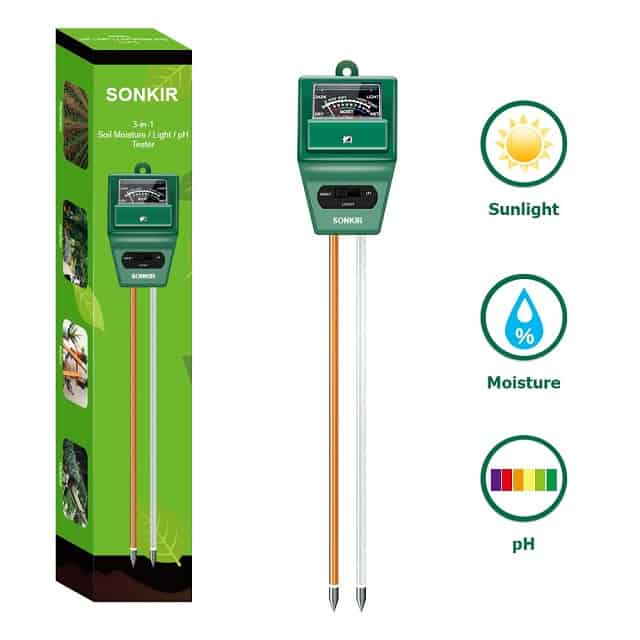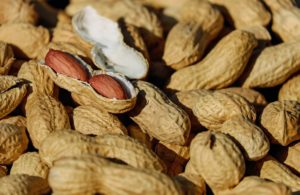Plum trees produce a large harvest of sweet, juicy fruit in most areas. Plums are a good source of vitamin C, vitamin A, and copper. Planting any fruit tree is a long-term investment, so care should be taken to select a suitable variety, also to be sure the site you choose can support the tree over its lifetime.
Buy Plum Trees Online
| Image | Name | Rating | Shop |
|---|---|---|---|
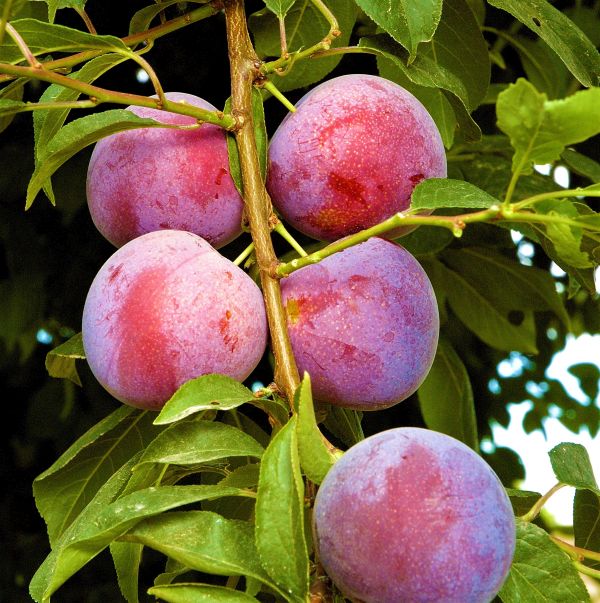 | Methley Plum Tree | ||
 | Beach Plum Dwarf Fruit Tree | ||
 | Native American Plum Tree – Edible Fruit – Established 1 Gallon Pot |
Types of Plums Trees
Plum trees come in two varieties, such as: European and Japanese. The European variety has an oval shape, with a soft skin and flesh, and is generally used to make jams and jellies, or dried to produce prunes. The Japanese variety has a heart shape, with a firm skin and flesh, and is best eaten fresh off the tree.
Are Plum Trees Self Pollinating?
While some plum trees are self-pollinating, most varieties will need a pollinator to produce any fruit.
Dwarf Plum Trees
Dwarf plum trees are a smart idea, even if your growing area is not limited, because you can plant more plum varieties in the same space that one standard plum tree would occupy. Dwarf plum trees also produce their first harvest earlier than standard plum trees and maintaining a shorter plum tree is much easier.
When Should I Plant a Plum Tree?
The best time to purchase a plum tree is in the early spring, once the ground has fully thawed and can be easily worked. Most plum trees are planted as one-year-old, bare root or potted trees, purchased from a nursery.
Plum Tree From Seed
While it is possible to start a plum tree from a seed, it’s best to buy a known variety from a nursery. Trees planted from seed might not be able to survive your local conditions, or they may not have their parents’ flavor or growth traits.
Once you have selected a variety and you have it in your possession, it is best to get the tree in the ground, as soon as possible. If the roots appear dry or the plants were mail ordered, it might be best to soak the roots for twenty-four hours before planting.
Planting Plum Trees

Do Plum Trees Need Full Sun?
Plum trees need full sun, so make sure to plant them in a location that gets sun for most of the day and will not be shaded over the lifetime of the tree. When it comes to the soil in which you plant a plum tree, it should be fertile with good drainage.
Plum Tree Soil Preparation
This tree will be in its location for years to come, so it’s a good idea to test the soil (Buy Online) around the area that you plan to plant the tree. If any nutrient deficiencies or pH problems are detected, then rectify them before planting the tree.
Once the soil in the surrounding area has been amended, dig a hole about 18 inches deep and mix in some compost, so the young roots will have a good, healthy start.
How Far Apart to Plant Plum Trees
If you are planting dwarf trees, aim for a spacing of 10 feet (32.4 m); and if you are planting standard trees, then place them 20 feet (6.2 m) apart. Make sure to avoid planting your plum trees in low points or frost pockets on your property, as this will lead to bud loss on the tree if this happens in the early spring, which can ruin any chance of getting any plums. If this cannot be avoided, then choose a variety that comes out of dormancy and blooms later in the spring.
Plum Tree Planting Depth
Once you are ready to put your tree into the ground, dig a hole just deep enough that the roots can be evenly spread out and the crown is 2 inches (5 cm) above the soil line. Make sure the soil underneath the roots is loose, so the roots are able to quickly establish themselves.
Carefully backfill the soil around the tree, while gently tamping the soil down, as you push it back in. Make sure as you work that the tree is staying upright. Check that the graft union is not covered with dirt, as this can lead to disease and the death of the tree. No fertilizer should be added at this time, in order to limit the risk of burning the roots.
Plum Tree Care & Harvest

Plum Tree Watering
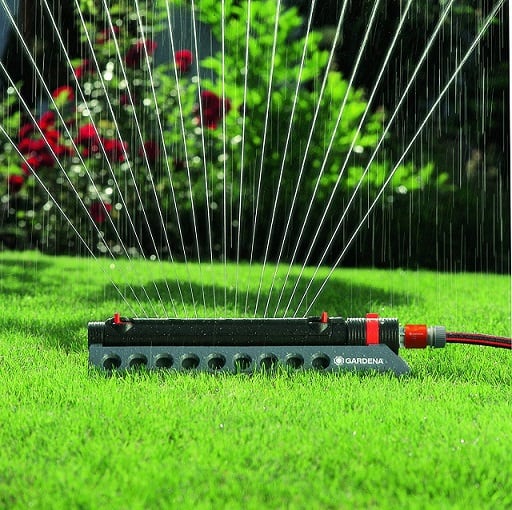
Water the tree in very well after it’s planted, as this will allow the soil to settle by pushing out any air pockets. While the tree is getting established, deeply water it every week. After the tree is established, natural rainfall should provide enough water.
In some areas rainfall might not be enough; and, in that case, 1 to 2 inches (2.5 to 5 cm) of water every other week should suffice. As the tree matures, water less towards the trunk and more towards the perimeter of the tree near the leaf drip line, as this area is where the roots are actively taking up water.
Mulch can be added around the tree while being careful not to allow the mulch to touch the trunk of the tree, as this can encourage rot along the base of the tree. Plum trees should be fertilized in the early spring with a high-nitrogen fertilizer.
Thinning Plums
When the tree begins to produce its first harvest, you should thin the fruit down to just a few well-spaced plums, so that the branches do not get overcrowded. Thinning the plums also protects the brittle branches of the plum tree from becoming overloaded and snapping.
When are Plums in Season
Harvest times vary for different varieties, but most plums are ready to harvest in late August early September. Wait until the plums are easy to remove from the tree; and, if they resist pulling, then wait another few days, in order to limit any potential damage to the tree.
When are Plums Ripe
European plums should be allowed to ripen until they are very soft, while Japanese plums can be harvested when they just begin to soften. Remove any decaying plums from the base of your trees, in order to reduce insects and any other diseases that might damage your tree in the future.
Storing Plums for Winter
Fresh plums can be stored for a week at room temperature. For long-term storage, you can make plum jam and/or jelly, or just slice up and freeze the plums.


